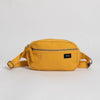Tees have long reigned over the fashion scene and are greatly favored by people of all ages. They are one of the coziest clothing types, and a go to option for almost every outing type. They are available in various designs, hues, and dimensions to accommodate the diverse tastes of all consumers. The history of t-shirts, however, is something we hardly ever consider.
Where do t-shirts come from— when did the t-shirt first come into existence?
Far from their humble beginning as uniform undergarments for soldiers, t-shirts have now blossomed into a vehicle for branding and artistic expression. We've gathered information on the development of this popular fashion article to show how it changed from a simple undershirt garment to the wardrobe staple it is today.
T-Shirt Origin— The Early Years
The cool modern t-shirts we know and love did not always exist in the same form or name. The union suit originated in New York, a one-piece white outfit with buttons at the front, equivalent to today's onesies. The public inevitably started following in the footsteps of the soldiers, and soon t-shirts gained popularity as a fashion trend.
| P.H. Hanes Knitting, a textile manufacturer, introduced a knitted version of the union suit in 1902. |
| American retailer Jacob Goldfrab manufactured cotton t-shirts in 1910 under the brand called 'Fruit of the Loom.' It quickly dominated the t-shirt market, and many American companies began selling t-shirts by the late 1930s. |
| The potential of t-shirts gained the attention of athletes, leading world-renowned tennis players like René Lacoste to launch Lacoste tennis shirts with André Gillier, a French knitwear designer in 1929. Lacoste established its embroidered trademark logos in 1933. A range of additional tennis, golf, and sailing shirts was thereafter marketed alongside Lacoste t-shirts. The original white Lacoste t-shirt was fashioned of jersey petit piqué, a thin knit fabric. It had short sleeves, ribbed collar, and shorter lengths than other t-shirts of the time. |
| In 1938, Sears introduced a new line of t-shirts called the gob shirt. Resembling a contemporary basic t-shirt, gob shirts were worn as both outerwear and as undergarments. |
| P.H. Hanes Knitting renamed their brand to Hanes in 1965 and pioneered the introduction of two-piece union suits. Hanes developed a heavier-weight t-shirt in 1975 that they termed the Hanes Beefy-T. |
- The Cultural Takeover
T-shirts quickly became a form of mobile advertisement with logos and taglines as consumers started to grasp their value. Even political overtones appeared in the shirts. For example, "Dew it for Dewey" in 1948 when Thomas E. Dewey the governor of New York utilized the shirt during his campaign for president. Political slogan t-shirts stormed a revolution only after silk-screen printing developed and became more accessible to everyone during the 1960s. Soon, customized t-shirt trends emerged, impacting fashion, Hollywood, businesses, rock bands, educational institutions, etc.
- The Luxury Take
T-shirts first appeared on fashion runways in 1962 with a high-end designer brand, Christian Dior's t-shirts summer collection. Ralph Lauren introduced a clothing line in 1972, categorized as Polos. Many well-known brands emerged during this period, expanding the t-shirt market.
- The Hollywood Influence
The media exposure of T-shirt culture on U.S television greatly accelerated the trend. Hollywood instilled a cultural wave that men wearing t-shirts portrayed a cool, rebellious personality. Among others, Marlon Brando sporting a classic white tee in Streetcar Named Desire (1951) and James Dean's iconic white tee & jeans outfit in Rebel Without a Cause (1955) contributed to the marketing of t-shirts as an item to flaunt tough masculinity.
- The Rock & Roll Influence
Next came the fashion cult of rock t-shirts. In 1956, the Elvis Presley fan group created the first rock t-shirt. In the seventies and eighties, iconic Rock bands like AC/DC, Guns n' Roses, and The Rolling Stones amplified the craze. It became a mainstream concert garment for both performers and the audience. People started collecting them as mementos, which is a tradition that carries on into today's age.
Closing Thoughts
T-shirts have been dispersed in various forms and designs across the globe over the years. Among the countless variations, crewnecks, V-necks, polos, henleys, etc., are some of the widely used designs in the 21st century. Any wardrobe in today's modern era remains incomplete without timeless tees. Thanks to t-shirts' rich and interesting history, today we get to enjoy a versatile clothing item that lets us wear our beliefs on our chest.
Related blog:







